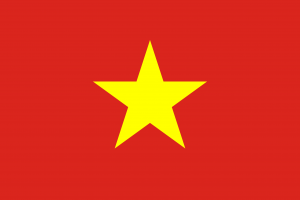Language/Vietnamese/Grammar/Nouns
Hi Vietnamese learners! 😊
In this lesson, we will learn about Vietnamese grammar for Nouns. Nouns are the building blocks of any language and Vietnamese is no different. In Vietnamese, nouns are used to describe people, objects, and concepts. By understanding the rules for Vietnamese nouns, you will be able to construct and understand sentences better.
Finish this lesson and explore these related pages: Negation, Plurals, 0 to A1 Course & Adverbs.
Overview[edit | edit source]
Vietnamese nouns are divided into two categories – countable nouns and uncountable nouns.
Countable nouns are used to describe items that can be counted or quantified, such as "một cái bàn" (one table), "hai bức tranh" (two paintings).
Uncountable nouns are used to describe items that cannot be quantified, such as "nước" (water), "đường" (sugar), and "gió" (wind). These nouns don't have a plural form and are used in their singular form only.
Note that in Vietnamese, there are no articles (a, an, the) to indicate the specificity of the noun. Instead, the specificity is often implied by the context of the sentence.
Classification of Vietnamese Nouns[edit | edit source]
Vietnamese nouns are classified into three groups based on their meaning:
1. People[edit | edit source]
People are classified as nouns and they are divided into two groups: human and non-human.
Human: "chị" (older sister), "anh" (older brother), "em" (younger sibling), "ông" (grandfather), "bà" (grandmother), "cô" (aunt), "chú" (uncle), and so on.
Non-human: These are proper names, such as "Hà Nội" (Hanoi), "Việt Nam" (Vietnam), or common names, such as "cái bàn" (table), "cơn gió" (wind), "tia sáng" (ray of light), "tấm áo" (shirt), and so on.
2. Animals[edit | edit source]
Animals are classified as "động vật" (animals) and "chim" (birds). Some examples include "con chó" (dog), "con mèo" (cat), "con bướm" (butterfly), "con chim" (bird), "con vịt" (duck), "con cá" (fish), and so on.
3. Things[edit | edit source]
Things are classified into four groups:
- Food: "thức ăn" (food), "gạo" (rice), "bánh" (cake), "mì" (noodles), and so on.
- Tools: "dao" (knife), "cái kéo" (scissors), "thước kẻ" (ruler), and so on.
- Nature: "nước" (water), "cây" (tree), "mây" (cloud), "sóng" (wave), and so on.
- Others: "thư" (letter), "chữ" (character), "giấy" (paper), "bài" (article), and so on.
How to use Vietnamese Nouns[edit | edit source]
One of the most important things to understand when learning about Vietnamese nouns is that there are no plural forms in Vietnamese. Instead, the quantity of the noun is indicated by using numbers or counting words like "một" (one), "hai" (two), "ba" (three), and so on. For example, "2 con chó" (2 dogs), "3 thức ăn" (3 foods).
In Vietnamese, there are also classifiers or measure words that are used to indicate the quantity of the noun. Classifiers are positioned between the number and the noun. For example:
| Vietnamese | Pronunciation | English |
|---|---|---|
| một con chó | mot con cho | one dog |
| hai cái bàn | hai cai ban | two tables |
| ba quyển sách | ba quyen sach | three books |
| sáu cái tô | sau cai to | six bowls |
In the above examples, "con," "cái," "quyển," and "cái" are all classifiers.
Another important rule is the proper order of the words in a sentence. In Vietnamese, the noun always comes before the verb, and adjectives come after the noun. For example:
- "Cô giáo dạy tiếng Việt" (The teacher teaches Vietnamese).
In this sentence, "cô giáo" (the teacher) is the noun, "dạy" (teaches) is the verb, and "tiếng Việt" (Vietnamese) is the object.
Dialogue[edit | edit source]
To help you understand Vietnamese nouns better, here is a dialogue with some examples:
- Person 1: "Chị có 2 con chó không?" (Do you have 2 dogs, older sister?)
- Person 2: "Vâng, tôi có 2 con chó." (Yes, I have 2 dogs.)
In this dialogue, "chị" (older sister) is the noun, "2 con chó" (2 dogs) is the object, "có" (have) is the verb, and "tôi" (I) is the subject.
Tips[edit | edit source]
Here are some tips to help you improve your Vietnamese noun usage:
- Read Vietnamese books or articles to become familiar with how Vietnamese nouns are used in sentences.
- Practice forming sentences using Vietnamese nouns with a native speaker. Find native speakers and ask them any questions!
- Watch Vietnamese movies or TV shows to improve your listening comprehension of Vietnamese nouns.
- Consult Vietnamese grammar schools for more practice.
Conclusion[edit | edit source]
In this lesson, we have learned about Vietnamese grammar for nouns. Vietnamese nouns are divided into two categories – countable and uncountable nouns. Vietnamese nouns are classified into three groups based on their meaning: People, Animals, and Things. The proper order of words in Vietnamese sentences is important to follow, with the noun always coming before the verb. Remember to practice using Vietnamese nouns with a native speaker to improve your grammar. 😊
➡ If you have any questions, please ask them in the comments section below.
➡ Feel free to edit this wiki page if you think it can be improved. 😎
Sources[edit | edit source]
- Vietnamese nouns – YourVietnamese
- Vietnamese grammar - Wikipedia
- Vietnamese Grammar in short lessons – YourVietnamese
Finished this lesson? Check out these related lessons: Ask Questions, Learning Future ..., Past Tense Verbs & Present Tense Verbs.
Videos[edit | edit source]
How to Make Nouns Plural in Vietnamese - YouTube[edit | edit source]
Possessive Pronouns in Vietnamese - Basic Vietnamese Grammar ...[edit | edit source]
Other Lessons[edit | edit source]
- Gender
- Questions
- Conditional Mood
- Personal pronouns
- Negation
- Give your Opinion
- Future Tense
- Articles
- How to Use Have

